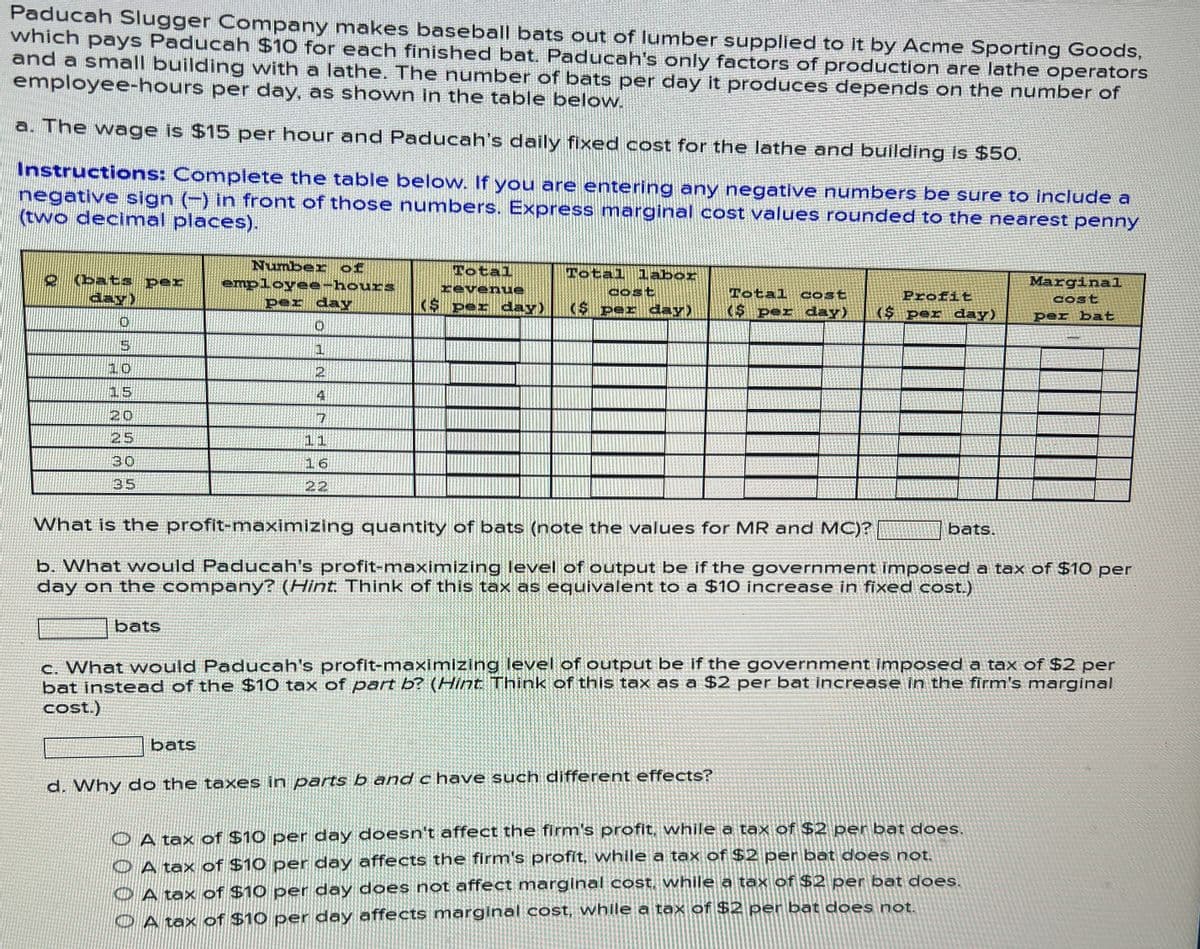Paducah Slugger Company makes baseball bats out of lumber supplied to it by Acme Sporting Goods, which pays Paducah $10 for each finished bat. Paducah's only factors of production are lathe operators and a small building with a lathe. The number of bats per day it produces depends on the number of employee-hours per day, as shown in the table below.
a. The wage is $15 per hour and Paducah’s daily fixed cost for the lathe and building is $50.
Instructions: Complete the table below. If you are entering any negative numbers be sure to include a negative sign (−) in front of those numbers. Express marginal cost values rounded to the nearest penny (two decimal places).
| Q (bats per day) | Number of employee-hours per day | Total revenue ($ per day) |
Total labor cost ($ per day) |
Total cost ($ per day) |
Profit ($ per day) |
Marginal cost per bat |
|---|---|---|---|---|---|---|
| 0 | 0 | — | ||||
| 5 | 1 | |||||
| 10 | 2 | |||||
| 15 | 4 | |||||
| 20 | 7 | |||||
| 25 | 11 | |||||
| 30 | 16 | |||||
| 35 | 22 |
What is the profit-maximizing quantity of bats (note the values for MR and MC)? bats.
b. What would Paducah's profit-maximizing level of output be if the government imposed a tax of $10 per day on the company? (Hint: Think of this tax as equivalent to a $10 increase in fixed cost.)
bats
c. What would Paducah's profit-maximizing level of output be if the government imposed a tax of $2 per bat instead of the $10 tax of part b? (Hint: Think of this tax as a $2 per bat increase in the firm's marginal cost.)
bats
d. Why do the taxes in parts b and c have such different effects?
multiple choice
-
A tax of $10 per day doesn't affect the firm's profit, while a tax of $2 per bat does.
-
A tax of $10 per day affects the firm's profit, while a tax of $2 per bat does not.
-
A tax of $10 per day does not affect marginal cost, while a tax of $2 per bat does.
-
A tax of $10 per day affects marginal cost, while a tax of $2 per bat does not.

Trending now
This is a popular solution!
Step by step
Solved in 3 steps with 3 images









